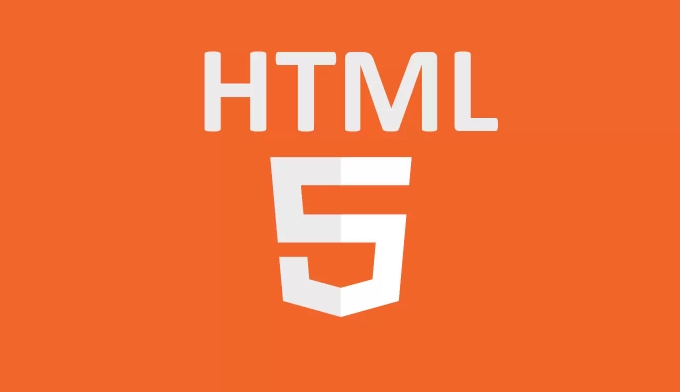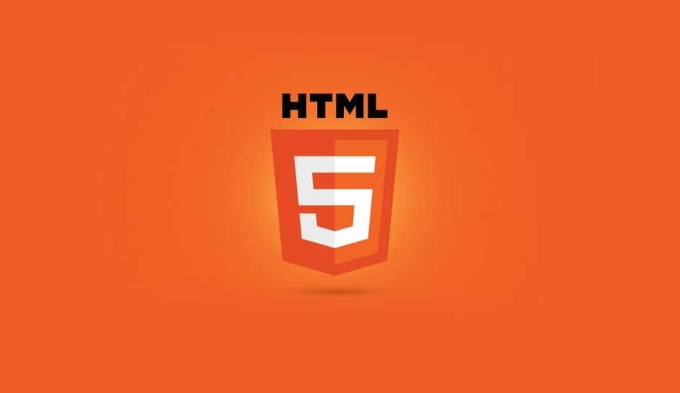Providing suggestions for form inputs with the HTML5 `` element.
Jul 09, 2025 am 02:01 AMUsing the HTML5 <datalist> element can effectively improve the form input experience. 1. The basic usage is to bind <input> to <datalist> through the list attribute, for example, set the list value of the input box and the id of the datalist; 2. It not only supports text input, but also applies to types such as numbers, colors, etc., but some types such as colors may not display a suggestion list in the browser; 3. You can dynamically fill options in JavaScript to load data from arrays or interfaces, and combine input events to achieve real-time search suggestions; 4. In terms of style, the main control of the appearance of the input box, the style of the drop-down list is limited, and you need to pay attention to the compatibility issues between the mobile and old browsers, and the server still needs to perform verification and fault tolerance.

Using the HTML5 <datalist></datalist> element to add suggestions to the form input box is a practical and troublesome method. It allows users to see drop-down prompts when entering, improving the experience while reducing input errors.
 ` element." />
` element." /> 1. Basic usage: bind <input> and <datalist></datalist>
To use <datalist></datalist> , the key is to associate the input box with the data list through list property. For example:
<input type="text" list="fruits"> <datalist id="fruits"> <option value="Apple"> <option value="Banana"> <option value="Cherry"> <option value="Orange"> </datalist>
This way, when the user starts typing in the input box, the browser will automatically match and display a list of suggestions. Note that list attribute value of <input> must be the same as id of <datalist> .
 ` element." />
` element." />2. Supports multiple input types, not just text
Although <datalist> is most commonly found in text input ( type="text" ), it also supports other types of inputs, such as numbers, colors, ranges, etc. For example, the following example is used in combination with digital input:
<input type="number" list="years" /> <datalist id="years"> <option value="2020"> <option value="2021"> <option value="2022"> <option value="2023"> <option value="2024"> </datalist>
This way, users can have both the freedom to enter manually and the recommended value when selecting a year.
 ` element." />
` element." /> It should be noted that although input types like type="color" can be bound to datalist, the browser may not display a list of suggestions, depending on the browser's support.
3. Dynamic filling content is more flexible
If your data volume is large or needs dynamic change, you can use JavaScript to populate <datalist> . For example, generate options from array:
<input type="text" list="cities" />
<datalist id="cities"></datalist>
<script>
const cities = ['Beijing', 'Shanghai', 'Guangzhou', 'Shenzhen'];
const dataList = document.getElementById('cities');
cities.forEach(city => {
const option = document.createElement('option');
option.value = city;
dataList.appendChild(option);
});
</script>This method is suitable for dynamic loading after obtaining data from the interface, and can also filter suggested content in real time based on user input.
- If you plan to search for the association function, you can listen to the input event and update the datalist in the callback.
- Be careful not to operate the DOM frequently, you can consider anti-shake optimization performance.
4. Style and compatibility tips
-
<datalist></datalist>is a native element with limited style control. You can style<input>, but the drop-down list itself is difficult to deeply customize. - Most modern browsers support
<datalist></datalist>, but the behavior may be inconsistent on mobile or older browsers. If stronger controls are required, third-party components may be considered. - Users can choose not to choose among the suggestions, so the server still needs to do a good job of verification and fault tolerance.
Basically that's it. It is not complicated to use <datalist></datalist> well, but it can significantly improve the interactive experience.
The above is the detailed content of Providing suggestions for form inputs with the HTML5 `` element.. For more information, please follow other related articles on the PHP Chinese website!

Hot AI Tools

Undress AI Tool
Undress images for free

Undresser.AI Undress
AI-powered app for creating realistic nude photos

AI Clothes Remover
Online AI tool for removing clothes from photos.

Clothoff.io
AI clothes remover

Video Face Swap
Swap faces in any video effortlessly with our completely free AI face swap tool!

Hot Article

Hot Tools

Notepad++7.3.1
Easy-to-use and free code editor

SublimeText3 Chinese version
Chinese version, very easy to use

Zend Studio 13.0.1
Powerful PHP integrated development environment

Dreamweaver CS6
Visual web development tools

SublimeText3 Mac version
God-level code editing software (SublimeText3)

Hot Topics
 Is H5 a Shorthand for HTML5? Exploring the Details
Apr 14, 2025 am 12:05 AM
Is H5 a Shorthand for HTML5? Exploring the Details
Apr 14, 2025 am 12:05 AM
H5 is not just the abbreviation of HTML5, it represents a wider modern web development technology ecosystem: 1. H5 includes HTML5, CSS3, JavaScript and related APIs and technologies; 2. It provides a richer, interactive and smooth user experience, and can run seamlessly on multiple devices; 3. Using the H5 technology stack, you can create responsive web pages and complex interactive functions.
 H5 and HTML5: Commonly Used Terms in Web Development
Apr 13, 2025 am 12:01 AM
H5 and HTML5: Commonly Used Terms in Web Development
Apr 13, 2025 am 12:01 AM
H5 and HTML5 refer to the same thing, namely HTML5. HTML5 is the fifth version of HTML, bringing new features such as semantic tags, multimedia support, canvas and graphics, offline storage and local storage, improving the expressiveness and interactivity of web pages.
 Understanding H5 Code: The Fundamentals of HTML5
Apr 17, 2025 am 12:08 AM
Understanding H5 Code: The Fundamentals of HTML5
Apr 17, 2025 am 12:08 AM
HTML5 is a key technology for building modern web pages, providing many new elements and features. 1. HTML5 introduces semantic elements such as, , etc., which enhances web page structure and SEO. 2. Support multimedia elements and embed media without plug-ins. 3. Forms enhance new input types and verification properties, simplifying the verification process. 4. Offer offline and local storage functions to improve web page performance and user experience.
 HTML5: The Building Blocks of the Modern Web (H5)
Apr 21, 2025 am 12:05 AM
HTML5: The Building Blocks of the Modern Web (H5)
Apr 21, 2025 am 12:05 AM
HTML5 is the latest version of the Hypertext Markup Language, standardized by W3C. HTML5 introduces new semantic tags, multimedia support and form enhancements, improving web structure, user experience and SEO effects. HTML5 introduces new semantic tags, such as, ,, etc., to make the web page structure clearer and the SEO effect better. HTML5 supports multimedia elements and no third-party plug-ins are required, improving user experience and loading speed. HTML5 enhances form functions and introduces new input types such as, etc., which improves user experience and form verification efficiency.
 HTML5: The Standard and its Impact on Web Development
Apr 27, 2025 am 12:12 AM
HTML5: The Standard and its Impact on Web Development
Apr 27, 2025 am 12:12 AM
The core features of HTML5 include semantic tags, multimedia support, offline storage and local storage, and form enhancement. 1. Semantic tags such as, etc. to improve code readability and SEO effect. 2. Simplify multimedia embedding with labels. 3. Offline storage and local storage such as ApplicationCache and LocalStorage support network-free operation and data storage. 4. Form enhancement introduces new input types and verification properties to simplify processing and verification.
 HTML5 and H5: Understanding the Common Usage
Apr 22, 2025 am 12:01 AM
HTML5 and H5: Understanding the Common Usage
Apr 22, 2025 am 12:01 AM
There is no difference between HTML5 and H5, which is the abbreviation of HTML5. 1.HTML5 is the fifth version of HTML, which enhances the multimedia and interactive functions of web pages. 2.H5 is often used to refer to HTML5-based mobile web pages or applications, and is suitable for various mobile devices.
 The Connection Between H5 and HTML5: Similarities and Differences
Apr 24, 2025 am 12:01 AM
The Connection Between H5 and HTML5: Similarities and Differences
Apr 24, 2025 am 12:01 AM
H5 and HTML5 are different concepts: HTML5 is a version of HTML, containing new elements and APIs; H5 is a mobile application development framework based on HTML5. HTML5 parses and renders code through the browser, while H5 applications need to run containers and interact with native code through JavaScript.
 Understanding H5: The Meaning and Significance
May 11, 2025 am 12:19 AM
Understanding H5: The Meaning and Significance
May 11, 2025 am 12:19 AM
H5 is HTML5, the fifth version of HTML. HTML5 improves the expressiveness and interactivity of web pages, introduces new features such as semantic tags, multimedia support, offline storage and Canvas drawing, and promotes the development of Web technology.






